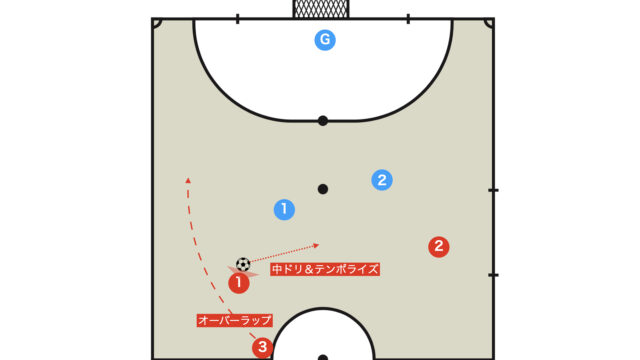Since 2vs0 and 3vs1 situations, where the FP difference between the opposing team and your team is 2, are naturally decisive phases with overwhelming attacking advantage, few people are consistently mindful of how to defend and attack in these circumstances.
However, considering that crisis and opportunity are two sides of the same coin (crisis ⇔ opportunity), capitalizing on these phases can significantly influence the flow of the game.
This article explains the theory behind attacking and defending in 2vs0 and 3vs1 situations.
2vs0
In transitions (counter-attacks), 2vs0 is the most ideal situation.
In futsal, a 1vs1 confrontation with the Goleiro is not easily decided, so finishing in a 1vs0 situation (shooting into an unguarded goal) is ideal.
Realizing that state makes the 2vs0 situation extremely important – a phase that must be capitalized on.
Defense (Retreat and Goleiro)
When the second PK line has not been crossed
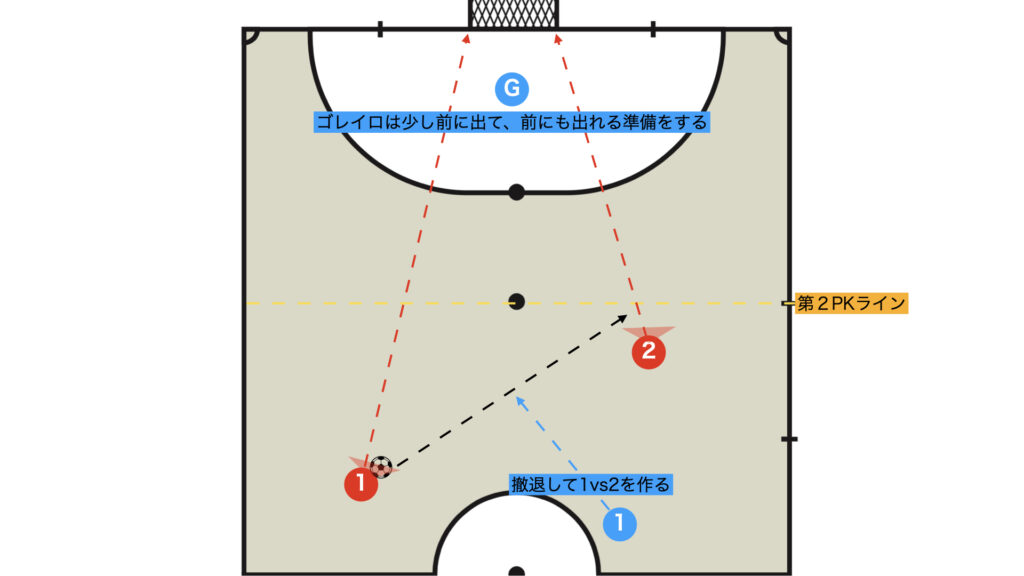
- Blue No.1 retreats between the two attackers to form a 1vs2 defense (and thereafter, the same as in a 1vs2 defense).
- If the opponent has not yet crossed the second PK line, the likelihood of a shot is low and a pass might be attempted; therefore, the Goleiro should advance just a little.
When the second PK line has been crossed
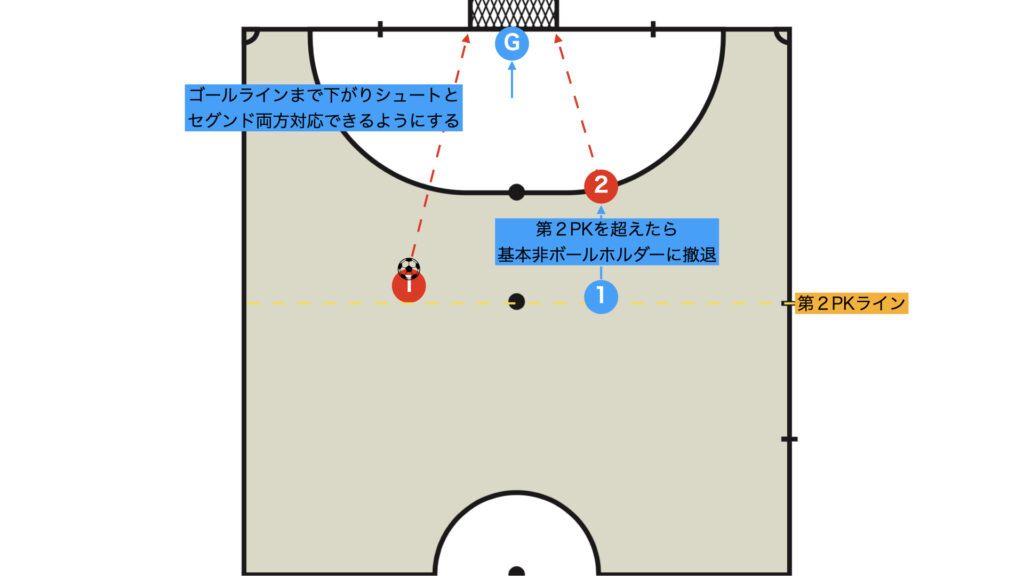
- Blue No.1 retreats to mark the non-ball holder in one-on-one coverage (face guard).
- The Goleiro drops back to the goal line to be ready to react to shots.
Key Points to Consider in Attack
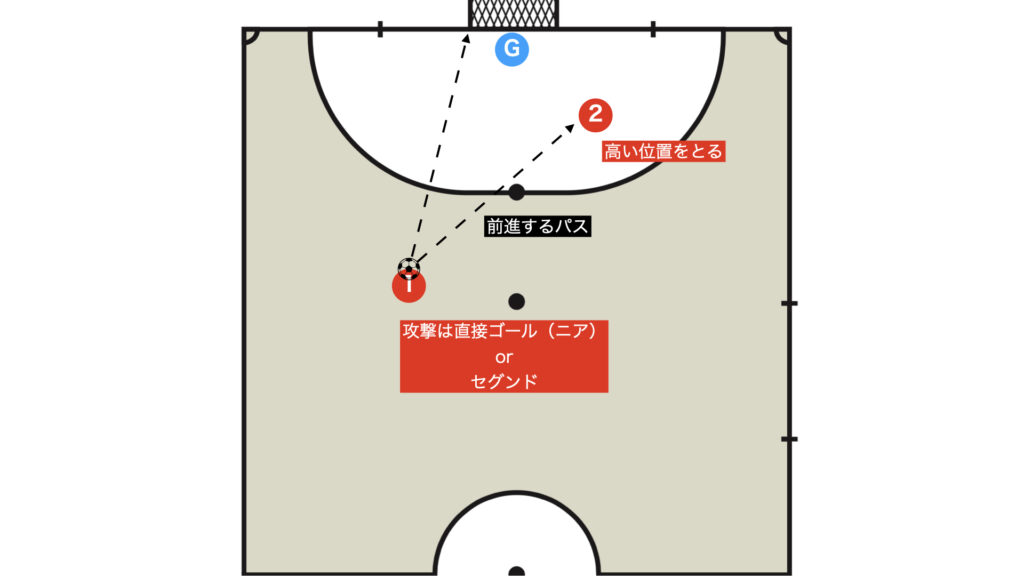
- Adjust to ensure that a player with strong shooting skills becomes the ball holder (exchange passes if time permits).
- Have the non-ball holder occupy the Segundo position (positioned high).
- Shoot directly at goal or work the play through the Segundo.
- If the Goleiro steps up to block, evade using the Segundo or by dribbling.
Direct Shot
Pass to the Segundo
Poor Example ①: A short sideways pass that does not advance
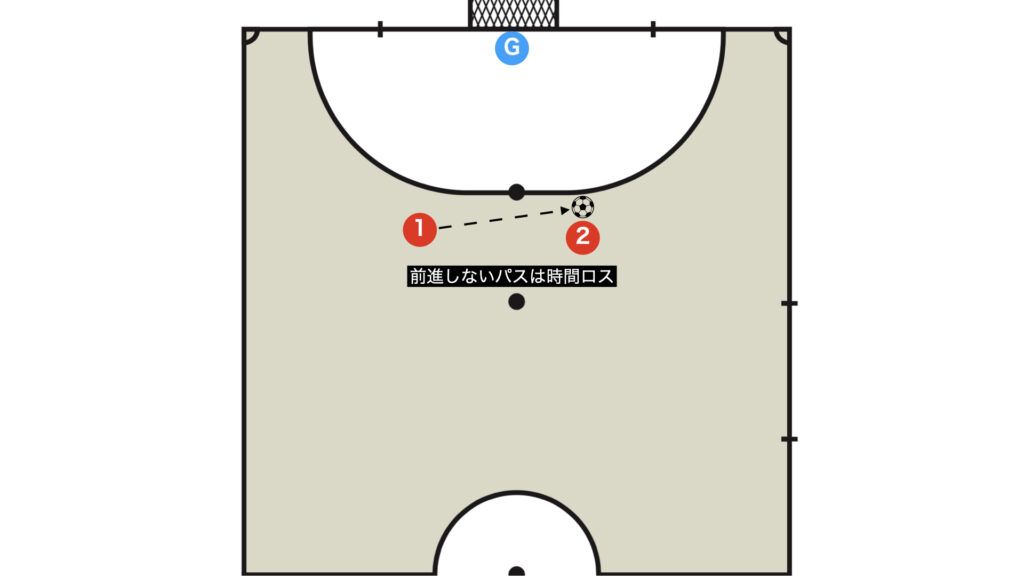
Even if you make such a short sideways pass that doesn’t advance the play, the Goleiro can immediately respond, resulting in a loss of time.
In transition phases, it is crucial to finish the play quickly, taking into account that there are players retreating.
(It is acceptable to intentionally give the ball to a player with shooting skills.)
Poor Example ②: Passing into open space
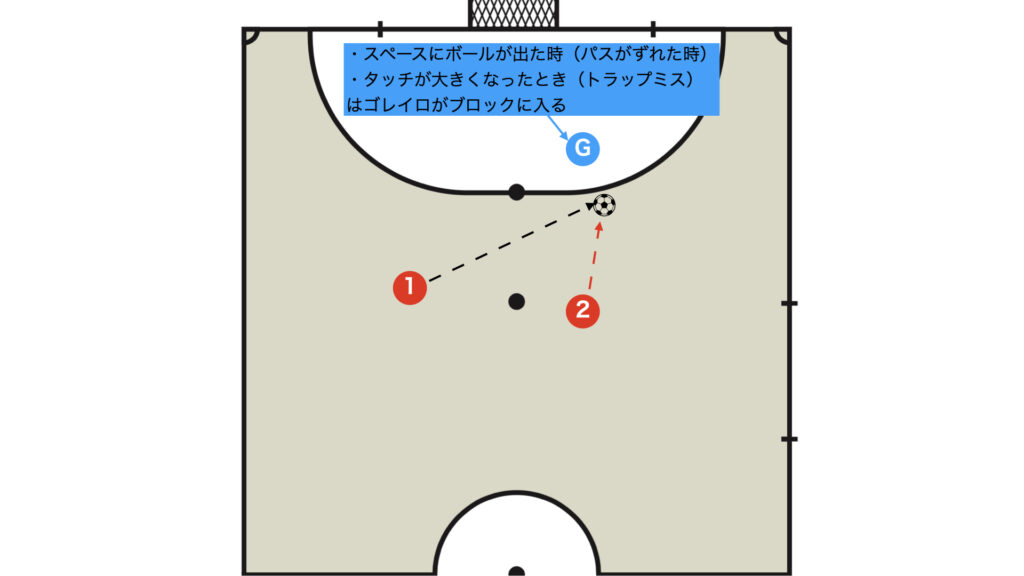
If you play the ball into open space, the Goleiro will come out; therefore, be mindful to pass to the feet outside the penalty area.
Conversely, when the ball is played into space, a trap is missed, or a pass goes awry, it becomes an opportunity for the Goleiro to step forward and block.
3vs1
Pull back to the 8m line
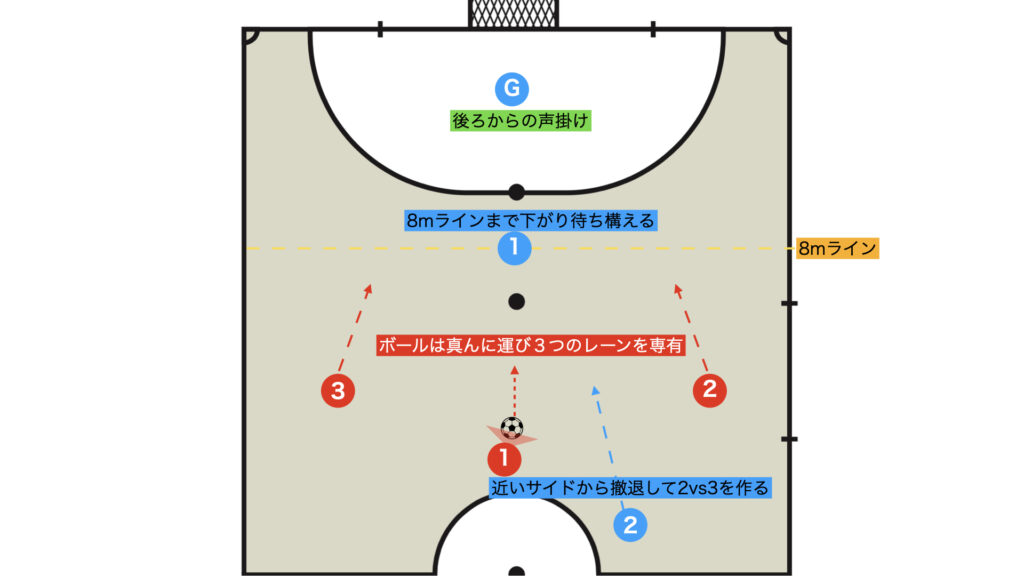
If a defender attempts to attack from a high line, the ball might be played to the side, creating a 2vs0 situation; therefore, pull back to the 8m line to engage in a one-on-one tussle with the opponent.
Although the 8m line is positioned between the penalty area and the second PK line, it can be hard to recognize – making it important for the Goleiro to communicate from behind.
A 1vs3 situation is inherently very difficult to defend, so creating time for retreat is extremely important.
Thus, pulling back to the 8m line – set slightly lower than the second PK (10m) line – aims to induce hesitation in the ball holder and makes it easier for the Goleiro to step up for a block.
Attack by cutting towards your dominant foot side at the 8m line

Cutting towards your dominant foot side establishes the strong side of the defense.
This, in turn, makes it easier for the Goleiro to prepare to block.
When the Goleiro steps up for a block, use face-guard

- At this time, Blue No.1 should keep an eye on his marking (Red No.1) and be ready to intercept if a pass is made to the Segundo.
- The Goleiro should step out right up to the edge of the penalty area to narrow the shooting and Segundo passing lanes.
Pursue non-advancing and short passes twice
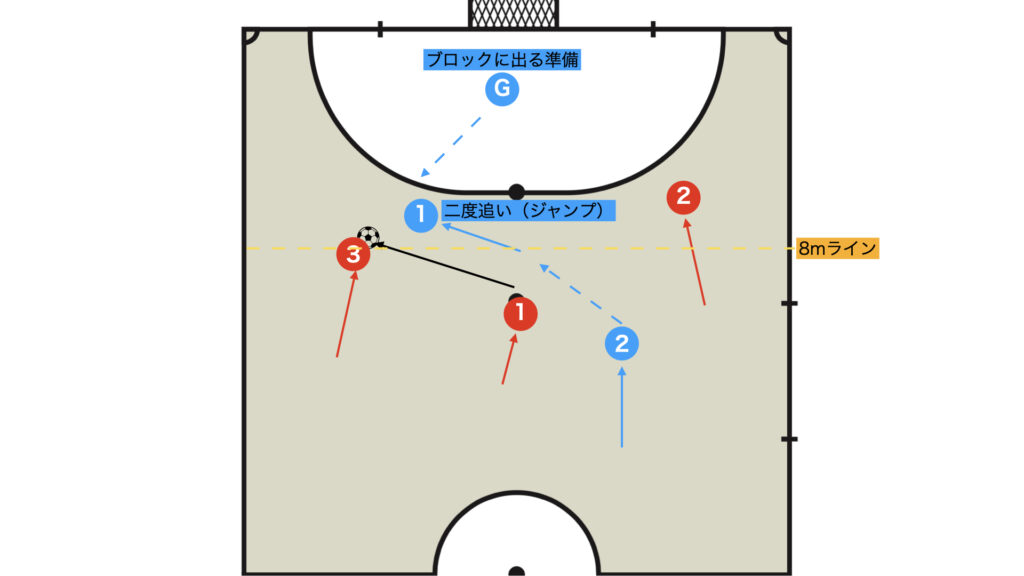
For sideways passes that do not advance the play, pursue them twice (jump) as the situation demands.
Summary
Although situations such as 2vs0 and 3vs1 do not occur frequently, the outcome of converting these phases into goals or defending them effectively can greatly change the flow of the game.
It is important to always keep in mind that crisis and opportunity are two sides of the same coin, and to apply tactical theory in both attack and defense.
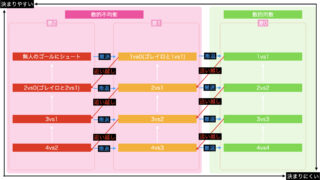
Thank you very much for reading this article to the end.
If you found this article useful, please consider sharing it using the social media share buttons above.
We regularly share valuable insights on futsal tactics on Twitter, so if you haven’t followed us yet, we’d appreciate your support!
We are committed to raising the level of futsal in Japan by sharing high-quality information through discussions with individuals who have coaching experience in the F.League and overseas.
If you have any questions or notice any mistakes, feel free to leave a comment below.
We update our articles regularly, so if you’d like to keep reading, please bookmark our site or search for “FutTech”!
